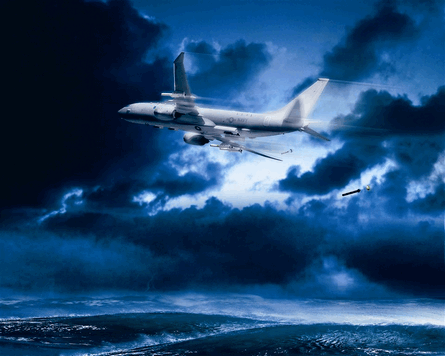Boeing plans to reach the power-on milestone for the US Navy P-8A Poseidon before mid-June, and will soon finalise its team competing for a chance to adapt the submarine-hunting aircraft for the EPX multi-intelligence mission.
The four-year-old P-8A programme is scheduled to enter flight testing in the fourth quarter of 2009. The first flight-test aircraft - dubbed T1 - should clear power-on in the week beginning 8 June before a roll-out in early July. The aircraft will then enter a period of loads calibration testing and mission systems integration.
Boeing is developing the 737-800ERX-based P-8A to enter service in 2013 to replace the Lockheed P-3C Orion fleet, although the schedule could be accelerated by one year.
 |
|---|
Boeing had made three major design changes since contract award. First, maximum take-off weight has grown by 1,680kg (3,700lb) to extend range by increasing the fuel load.
At the same time, the navy is reducing weight and complexity by removing a secondary sensor called the magnetic anomaly detector. Perhaps to compensate, Boeing plans to demonstrate launching a captive-carriage ScanEagle unmanned aircraft system from the P-8A. The ScanEagle will be equipped with a magnetometer to lock on to a submarine and track it for up to 24h.
Finally, Boeing replaced the P-8As original blended winglets with raked wingtips to meet de-icing requirements. The 737 is not designed to operate in icing conditions for more than 30min, but the P-8A must endure such conditions for up to 3h.
Boeing is building 108 P-8As for the USN through 2019, and is courting new orders from foreign customers, including Australia and India.
But the international market is only the beginning of Boeing's plans to expand the P-8A's customer base.
The USN also plans to replace the EP-3E Aries II fleet of signals intelligence aircraft with the dramatically more capable EPX fleet of 19-26 aircraft, starting in 2019. The number of aircraft jumped from 14 to 19 to the new range about one year ago, says Paul Summers, Boeing's capture lead manager for EPX.
EPX will combine the signals intelligence with the target identification and attack capability normally associated with the US Air Force E-8C JSTARS ground surveillance system aircraft.
The team of Boeing/Argon ST is among three competitors - including Lockheed Martin and Northrop Grumman/L-3 Communications - selected for phase 1 technology development study contracts earlier this year.
Boeing is now preparing to submit its bid for the second phase of study contracts. The USN plans to downselect to two competitors in the fourth quarter for a three-year technology programme. A single contractor will be selected in 2012 to enter an at least five-year system development and demonstration phase.
A key decision facing Boeing is the radar selection for its EPX bid. Raytheon has developed and integrated the littoral surveillance radar system for the P-3C fleet, and that remains a leading candidate for EPX. Boeing also is inviting competitive interest with Northrop, maker of the multi-platform radar technology insertion programme family of radars.
Source: Flight International























